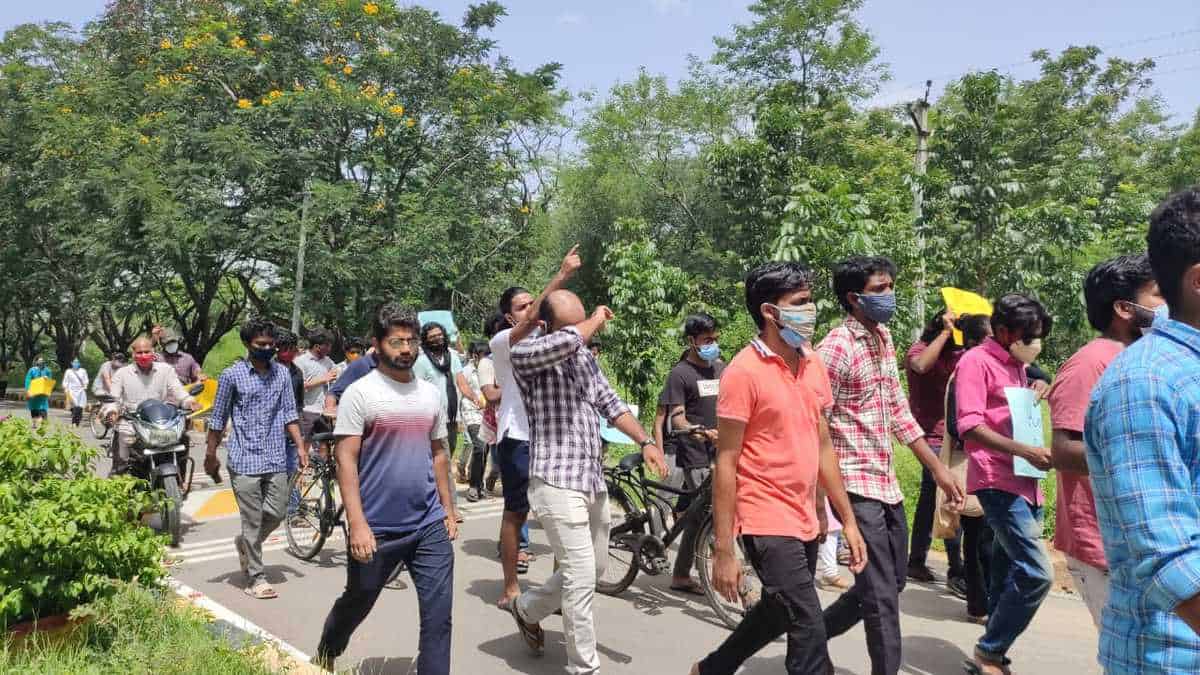

The latest data released by the central government for 2019-20 shows a minor increase in school enrolments at the pre-primary, primary and upper primary levels. In general, across the country, enrolments seem to have stagnated at the 2018-19 levels (Department of School Education and Literacy, 2019-20). The enrolment by Muslims remains proportional to their population at 14% of the total enrolments. Nearly all children are enrolling in primary schools, across all socio religious categories. That’s the good news.
However, the slide starts as we go up the value chain. Enrolments for Muslim students this year in higher secondary education was at 10% of the total enrolments. The proportion of enrolments decline with an increase in class levels. About 33% of students belonging to Scheduled Castes, Scheduled Tribes and Other Backward Classes drop out of state government schools in Class 10. In 2019-20, there were negligible dropouts at the primary and upper primary levels; however, dropouts at the secondary education level amounted to 17%. Even before the pandemic, secondary education was already grappling with issues of lower enrolments, higher dropouts, poor retention and transition levels.
The bad news just got worse. 1.5 million schools were shut in India for 392 days, a significant part of 2020 and 2021, due to the pandemic impacting 250 million children. A vast majority of schools did not possess the means or the method to shift to digital education swiftly. As per the U-DISE report, only 37% of schools in the country had a functional computer facility. 58% of private schools had a functional computer facility, only 28% of Government schools had the same. Only 22% of the schools in the country had internet connectivity; this was far lower for Government schools (11%).
And here is where the pandemic makes its impact serious. Students from disadvantaged groups struggled to gain access to remote learning and work hardest with achieving the desired learning outcomes. In the USA, White students were only 1 to 3 months behind on their learning schedules, while the students of colour were 3 to 5 months behind in their learning. A survey by ChildFund in 20 backward districts across 10 States in India revealed that 64% of students in rural areas felt that they would have to drop out of school if not given additional support.
Across 190 countries, 1.7 billion students were affected by the closure of educational establishments (World Bank Group, UNICEF and UNESCO, 2020). While the advanced nations had the means and the method to offer remote learning to their students, low-income countries faced several challenges in offering the same. According to UNESCO, high-income countries’ digital education offerings covered 80% of the population, and in low-income countries, only 50% of the student population received digital education establishments.
The problem is that the pandemic shows no signs of abatement, with variants causing fresh damages and a third wave looming large in largely unvaccinated populations. Schools cannot re-open in the foreseeable future. Despite the Internet reaching only 45% of the Indian population, online education seems to be the only viable solution. And herein lies a problem of poor digital access.
Unstable internet connection and low broadband penetration in semi-urban and rural areas impacted digital learning opportunities. The adoption of digital technology was smoother among private schools in India, but government schools and lower end schools were not able to take that digital leap seamlessly. In Brazil, for instance, 95% of the children from privileged families had computers at home, while only 14% of the students from low-income families had computers at home. In the USA, 100% of students from affluent families had computers at home, while only 25% from low-income families did.
With the closure of schools, Mid-day meals in schools have also been disbanded. The lockdown has affected the nutritional security of approximately 115 million children. Given that every second child in India suffers from at least one form of malnutrition, the absence of both Anganwadi services and mid-day meals will have large scale ramifications for the country at large. The complete disappearance of Early Childhood Care and Education in the COVID years will have a massive impact on children’s social, emotional, cognitive and physical needs and thereby impact learning outcomes for a vast majority in the future.
For a young developing country like India, the loss in learning shall translate into significant losses in human capital in the years to come. In October 2019, about 55% of children in India were unable to read and understand short, age-appropriate text by the age of 10. Learning assessments of students in India indicated that 54 per cent do not achieve the Minimum Proficiency Level at the end of primary school. Around 2 per cent of primary school-aged children in India were not a part of any school system (World Bank, 2019). The pandemic will only serve to exacerbate these deficits in education.
A study by Azim Premji Foundation highlighted that 82% of children across 5 Indian States have lost at least one specific mathematical ability, such as identifying numbers, performing operations or problem solving, compared to last year. Similarly, 92% of children, on an average, have lost at least one specific language ability such as oral expression, reading fluency, writing skill and reading comprehension, compared to the previous year. This is seen uniformly across all classes (Azim Premji Foundation, 2021).
Before the second wave, only eight states/UTs opened classes from grades 1-12, while 11 have re-opened classes for grades 6-12, and 15 states have opened classes for grades 9-12. Three states have re-opened Anganwadi centers (Sharma, 2021), with younger children losing out considerably on crucial foundational learning. The devastation caused by the second wave has ensured that schools will tether on caution while even contemplating re-opening schools.
Re-opening schools will be an unprecedented challenge. Schools will be looking at children who have lost years of valuable education and essential social skills. The task of easing young children into classrooms and normalising classroom learning will come with its own set of challenges. Apart from learning outcomes, an oft-ignored aspect in the Indian education ecosystem is mental health. The ChildFund Survey reported that most parents observed an increase in adverse behaviour in their wards, and more than 60 per cent of children themselves felt behavioural changes such as increased anger, irritability and lack of concentration. With the highest rate of student suicide in the world, India can no longer ignore this aspect, especially with the closure of schools.
Amir Ullah Khan and Nahia Hussain are researchers at Centre for Development Policy and Practice (CDPP) based in Hyderabad.

